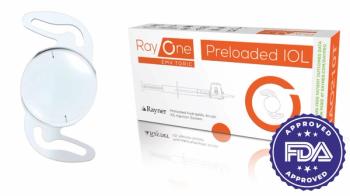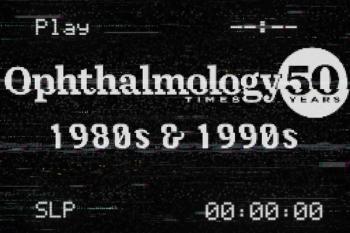
These 3 things are part of a cataract surgeon's signature
Think of the phaco incision, capsulorhexis, and IOL centration as your “signature” on every cataract surgery that you perform.
Many ophthalmologists will perform tens of thousands of
One year or even one decade after your cataract surgery, anyone who examines the patient with a slit-lamp microscope will notice these three things:
- the capsulorhexis,
- the incisions, and
- the position of the
IOL .
Take time to master each of these steps to produce the best visual results for the patients, and also to perfect your surgical signature. Everything else in the surgery including the nucleo-fractis technique, the ultrasound energy, the fluidic volume used, the viscoelastics, and even the postoperative
1. Measure the capsulorhexis to ensure the correct size and placement
The capsulorhexis is important for successful cataract surgery because it gives the capsular opening strength during cataract removal and allows for stable, long-term positioning of the IOL.
We can create the capsulorhexis using forceps or a bent-needle (cystotome) and we aim to make it round, well-centered, and about 5 to 5.5 mm in diameter for most cases. For these manual techniques, it is helpful to measure first to get an idea of the appropriate size prior to starting the capsulorhexis.
We can also use automated devices such as a femtosecond laser or units which uses a electrical discharge, to create a consistent capsulotomy.
Most of the time, I use forceps, which have been marked at 2.5 mm and 5.0 mm from the tip, to guide me. At the beginning, prior to starting the capsulorhexis, I measure the anticipated position and diameter. Then I start the tearing of the anterior lens capsule and then stop and re-measure just to be sure.
Then after completion of the capsulorhexis, a final measurement is done to confirm the correct diameter (Figure 1A and 1B). We use the forceps to estimate the ideal position and size of the capsulorhexis, then during this step, we can use the marks on the forceps tips to ensure the correct radius and diameter of our opening.
Many surgeons use the iris or pupil size as a guide for capsulorhexis creation - but you should not. Do not fall into this trap.
Look at the picture in Figure 2 - Do not use the iris to guide the capsulorhexis size because dilation and anterior segment size will vary between patients. The large myopic eye (left) has a bigger capsular bag and dilation compared to the average emmetropic eye (right).
Both eyes have the same model lens with a diameter of 6.0 mm and both have a capsulorhexis which is about 5 mm in diameter, giving and excellent overlap of the optic. But the eyes are very different - the anterior segment size, the white-to-white measurement, and the pupil dilation are all markedly different. In the large myopic eye, using the iris as a guide would have resulted in an overly large capsulorhexis which would not have held the IOL optic securely.
This is the reason why I use marks on my forceps.
VIDEOS FOR THE CAPSULORHEXIS:
2. Craft the phaco incision so it has balanced architecture -- it will seal better and induce less astigmatism
The phaco incision is critical to the success of the cataract surgery. It gives us controlled access to the cataract, assists in maintaining fluidic balance, induces minimal astigmatic changes, and seals securely. A well-constructed incision makes the surgery safer and the recovery quicker.
A good incision will have excellent balance between the roof and the floor and an appropriate architecture. It will seal well and securely with minimal astigmatic effect.
If the incision has too long of a tunnel length, it starts out very shallow with a thin roof and then the surgeon abruptly changes angle to enter the anterior chamber. The result is a bad incision with too thin of a roof and too thick of a floor which does not seal well. (Figure 3)
The angle of approach of the keratome will determine the tunnel length of our phaco incision. If the angle is very flat and the blade is right against the ocular surface, the tunnel length will be long. If the angle is greater and the blade is now more parallel to the iris plane, the tunnel length will be shorter. We can vary this angle as we make the incision to tailor the technique to the anatomy so that every eye has a great incision.
This angle tends to be about 30 degrees (Figure 4) but it can vary based on the patient’s anatomy. The corneal curvature plays a role as does the corneal thickness. There are variations in human anatomy so the surgeon must be able to make adjustments to provide the ideal result for each individual eye.
If your incisions tend to be too short, then using a smaller angle with the tip of the keratome angled more toward the corneal apex is appropriate. If your incisions tend to be too long, then using a larger angle will allow the tip of the keratome to enter the anterior chamber sooner, resulting in a shorter tunnel length.
VIDEOS FOR INCISIONS:
3. Center the IOL, particularly if there is an optic with diffractive rings, and dial in the correct toric axis
With new technology IOLs, we have the ability to address corneal astigmatism as well as provide a wide range of vision without glasses. The toric correction on the IOL must be aligned with the steep corneal axis and the diffractive rings of the multi-focal, tri-focal, or extended-depth-of-field optic must be centered appropriately.
The technique that I prefer is to first align the toric marks of the IOL with the steep axis of the cornea, and then center the diffractive rings using the Purkinje images (Figure 5). This ensures the best visual outcomes for the patient.
VIDEOS FOR IOL CENTRATION:
We enjoy performing cataract surgery as much as our patients enjoy the visual results, and we take pride in every case that we do.
Think of the phaco incision, capsulorhexis, and IOL centration as your “signature” on every cataract surgery that you perform.
These are the three most obvious signs of the prior cataract surgery and they are a reflection of the surgeon’s meticulous attention to detail.
We want to strive to make a beautiful incision with balanced architecture and a round and appropriately-sized capsulorhexis. Then, the well-centered IOL will perform at its best and produce the best vision for our patients.
Disclosures:
Uday Devgan, MD, FACS
Dr. Devgan is in private practice at Devgan Eye Surgery in Los Angeles and Beverly Hills. He is clinical professor of ophthalmology at the Jules Stein Eye Institute at the UCLA School of Medicine and Chief of Ophthalmology at Olive View-UCLA Medical Center. Dr. Devgan owns and runs
Newsletter
Don’t miss out—get Ophthalmology Times updates on the latest clinical advancements and expert interviews, straight to your inbox.





















































.png)


